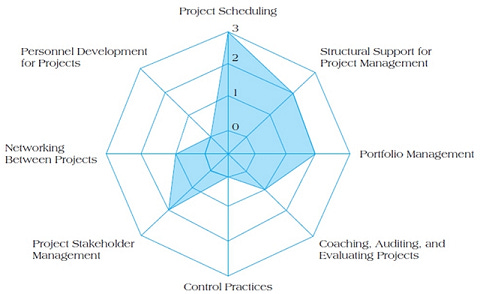From Chaos to Clarity: How Project Maturity Models Drive Consistent Success
Master the Art of Project Management with a Roadmap to Maturity
"Project maturity isn't a destination—it's a strategic journey to consistent success, sustainable growth, and continuous improvement."
Follow me for more Project Management Insights: LinkedIn | LinkedIn Newsletter
Project management success doesn’t happen overnight. A structured approach is essential for organizations to excel in delivering projects on time, within budget, and with consistent quality. Enter the Project Maturity Model (PMM): a proven framework that guides organizations from ad hoc project management practices to streamlined, high-performing operations. Whether working with a team new to formal project management or looking to refine an already successful PMO, understanding project maturity models can help you unlock greater efficiency and strategic value.
In this edition of The PM Playbook, we explore Project Maturity Models and their practical application in elevating organizational performance.
What You’ll Find in This Article:
The key components of a Project Maturity Model and its purpose.
A breakdown of the five maturity levels and how to progress through them.
Leveraging tools like the Spider Web Diagram to visualize and track progress.
Strategies for overcoming common barriers and advancing project maturity.
Pro tips for implementing, sustaining, and transitioning between maturity levels effectively.
What Is a Project Maturity Model?
A Project Maturity Model (PMM) is a valuable framework for assessing and improving an organization’s project management capabilities. It provides a structured roadmap for evolving from informal, ad hoc practices to highly optimized, data-driven processes. By benchmarking current practices against defined maturity levels, organizations can identify gaps, streamline workflows, and implement strategies that drive better outcomes. This progression enhances project efficiency and aligns management practices with broader organizational objectives.
PMMs typically follow five levels: Initial, Repeatable, Defined, Managed, and Optimized. Advancing through these stages helps organizations strengthen governance, improve resource allocation, and refine risk management practices. Applicable across industries and adaptable to teams of any size or complexity, PMMs offer a scalable approach to maturity.
The Five Levels of Project Management Maturity: A Path to Excellence
Level 1: Initial – The Starting Point
At the Initial Level, project management practices are informal, inconsistent, and often reactive. Projects succeed more by luck or the heroic efforts of individuals than by repeatable processes. Teams at this stage frequently encounter missed deadlines, budget overruns, and unclear roles or objectives.
Characteristics of the Initial Level:
Lack of standardized processes or tools.
Project success depends heavily on individual contributors.
Minimal documentation and poorly defined roles.
Pro Tip: Focus on quick wins, like creating a basic project template or checklist. This will help standardize processes without overwhelming your team with significant change.
Level 2: Repeatable – Building Consistency
At the Repeatable Level, organizations begin establishing basic processes and templates. Project planning becomes more consistent, and teams document key aspects of their work. While this level is an improvement over the chaotic Initial Level, there’s still room for refinement, especially in adapting processes to complex projects.
How to Advance at the Repeatable Level:
Develop a project management methodology, such as Agile or Waterfall.
Create basic templates for schedules, budgets, and risk assessments.
Train team members on the fundamentals of project management.
Pro Tip: Assign a project champion to monitor compliance with established processes. This helps reinforce habits while identifying areas for further improvement.
Level 3: Defined – Creating Standardization
The Defined Level marks a significant step forward as organizations formalize their project management practices across departments. Teams adopt consistent standards, templates, and governance models, creating uniformity and accountability. This level ensures that every project, regardless of size, aligns with organizational goals and adheres to a clear methodology.
Keys to Standardization:
Document workflows, project plans, and reporting structures.
Introduce governance frameworks to ensure alignment with strategic objectives.
Use a project management tool to centralize documentation and communication.
Pro Tip: Establish a Project Management Office (PMO) to oversee processes and drive adherence to standards. A PMO can provide valuable insights into portfolio performance and improvement opportunities.
Level 4: Managed – Enhancing Predictability
Organizations at the Managed Level excel in applying metrics and performance data to inform decision-making. Projects are consistently delivered within defined parameters, with teams proactively identifying and mitigating risks. The focus shifts from completing projects to delivering measurable value aligned with broader business objectives.
Benefits of the Managed Level:
Metrics and KPIs drive continuous improvement.
Risks are identified early and addressed systematically.
Stakeholder satisfaction increases due to predictable outcomes.
Pro Tip: Use dashboards and reporting tools to communicate project performance data effectively. This transparency builds trust with stakeholders and encourages buy-in for future initiatives.
Level 5: Optimized – Driving Innovation
The Optimized Level represents the pinnacle of project management maturity. Organizations at this stage continuously refine their processes using lessons learned and emerging best practices. Teams use predictive analytics, AI tools, and other advanced technologies to anticipate challenges and uncover opportunities for innovation.
What Sets Optimized Organizations Apart:
Processes are continuously refined based on data and feedback.
Teams excel in knowledge sharing and cross-functional collaboration.
Advanced tools enable dynamic planning and real-time decision-making.
Pro Tip: Foster a culture of innovation by celebrating experimentation and learning from failures. Provide teams with the resources and tools to push boundaries and deliver transformative results.
Using the Spider Web Diagram to Visualize Progress
The Spider Web Diagram (a radar chart) is a powerful tool for visualizing an organization’s project maturity across multiple dimensions. This chart plots key areas, such as governance, risk management, resource allocation, and stakeholder engagement, allowing teams to assess strengths and weaknesses at a glance. It provides a clear picture of where your organization stands and highlights the areas that require immediate focus for improvement.
Steps to Use the Spider Web Diagram:
Identify the key dimensions of project maturity that you want to evaluate.
Assign scores (e.g., 1 to 5) for each dimension based on a maturity assessment.
Plot these scores on a radar chart to visualize your organization's overall project maturity.
Pro Tip: Use spider web diagrams during quarterly reviews to track progress. Comparing charts side by side provides a compelling visual story of your organization's maturity journey and motivates teams to achieve higher scores.
How to Transition Between Levels
Progressing through the project maturity levels requires a strategic approach, strong leadership, and commitment to change. Organizations should prioritize high-impact improvements while fostering a culture of learning and accountability. Success depends on balancing short-term wins with long-term processes, training, and tools investments.
Steps to Transition:
Conduct regular maturity assessments to track progress.
Invest in leadership training to drive change management initiatives.
Focus on continuous improvement rather than perfection at each level.
Pro Tip: Communicate the benefits of each improvement initiative to gain stakeholder support. Highlight how advancing maturity levels contribute to the organization's strategic goals and overall success.
Final Thoughts
Building project maturity is not a one-time task—it’s an ongoing journey that evolves alongside your organization's needs and goals. By understanding and applying the principles of project maturity models, you can create a roadmap for sustainable growth and success. Each step forward brings greater efficiency, consistency, and value to your project management efforts.
Follow me for more Project Management Insights: LinkedIn | LinkedIn Newsletter





